Reshaping the Funnel with Contextual Targeting
PUBLISH DATE: 28 June 2021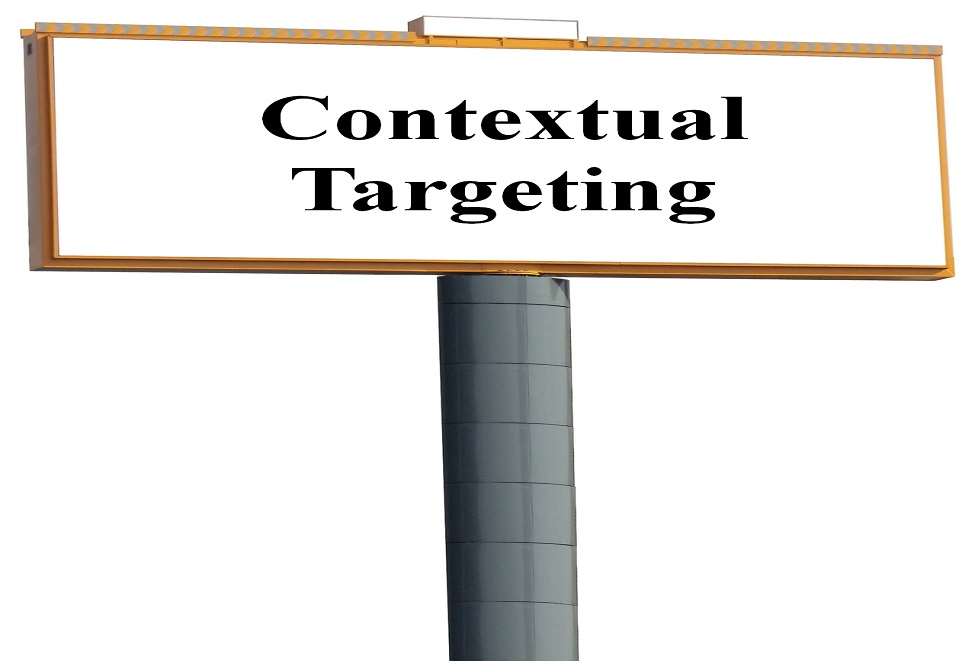
A marketing funnel is the path that leads move on until they turn into customers. This funnel is very important for marketers as it provides them insights on various activities that are required to be undertaken to attract more and more customers.
Marketers always look out for ways to strengthen their marketing funnel so that more and more leads can be moved down the funnel. One of the most effective ways to do this is to reshape the marketing funnel by using different types of contextual targeting. This article discusses some of the best contextual targeting types, which include contextual email marketing, sponsored content, and contextual ads.
Contextual Email Marketing Offers a Personalized Experience to Consumers
Contextual email marketing involves sending emails that are personalized and relevant, i.e., delivering the right email to the right people at the right time. Contextual emails are based on customers’ past purchases, local weather, time zones, devices, etc.
For example, if it starts snowing, a contextual email based on local weather will give offers on extreme winter clothing instead of light winter clothing. Similarly, if a person usually purchases electronic items from a shopping website, then contextual emails delivered to him by the website will be mostly on electronic products and not on others.
Consumers get dozens of emails a day. It is obvious that they will not pay heed to every mail in their inbox. If a brand wants its email to stand out among other mails, so that consumers interact with the message and eventually buy the advertised product, it should provide them a personalized experience, which is best achieved through a contextually relevant message.
Sponsored Content Offers a Powerful, Non-Interruptive Way to Promote Products/Services of a Brand
Sponsored content on a website is a content that resembles the surrounding content on the web page, but is paid for by a sponsor. In real sense, sponsored content is an ad that mingles so much with the surrounding content that it seems to be a part of the original content. It is in full harmony with its surroundings unlike an invasive ad.
As sponsored content is contextually relevant to its surrounding content, there are high chances of it being consumed by a website’s visitors. Sponsored content includes different types of content such as articles, videos, podcasts, listicles, infographics, etc. An example of sponsored content is an article on a car brand in an online car magazine.
Sponsored content helps marketers reach potential customers at the top of the funnel. It can include more promotional content for those nearer to the interest stage, or more educational content to portray a brand as a reliable resource.
Contextual Ads help Marketers Drive Massive User Engagement
Contextual ads are ads that are contextually well-aligned with the content that people are currently consuming. As these ads are relevant to what is in the mind of the people at the time when they see the ad, there are high chances of their engagement with the ads such as clicking on the ad or watching it till end if it is a video ad. For example, if a person is watching a tourism video, then he/she is highly likely to engage with an ad of a tour operating company.
Contextual advertising not only helps marketers in achieving top-of-funnel goals, but also in reaching people who are already aware of the brand and its products or are looking to buy a similar product from some other brand. Through contextual ad targeting, marketers can connect more meaningfully with consumers and drive them down the funnel.
For a successful funnel marketing strategy, marketers should use the right mix of the above-mentioned contextual targeting types. It will help them pull more and more leads from the top of the funnel to the bottom, converting them into customers.
Silverpush Wins Multiple Awards at MMA Smarties MENA 2020
PUBLISH DATE: 30 March 2021Silverpush has won 4 awards in a row at MMA Smarties MENA 2020.
Silverpush has won a Gold and 3 Silver awards across multiple categories. It has won Gold for Mobile Gaming, Gamification & E-Sports category, and a Silver for each of the following three categories – Lead Generation, Direct Response, Conversions; Machine Learning & AI; and Innovation.
MMA Smarties MENA awards honor the most effective modern marketing efforts across the Middle East and North Africa region. Smarties awards recognize leaders, brands, agencies, and tech providers that make use of technology to pioneer new approaches in modern marketing. MMA Smarties awards are held annually to honor outstanding innovation and creativity resulting in significant business impact.
Silverpush was honored with Gold for its Euphoria Moments campaign for Rakbank. To bring Barca fans closer to their club, Rakbank launched the FC Barcelona credit card. Rakbank wanted to reach the target audience for its new credit card by tapping into fans’ emotions, passion and pride. For this, it leveraged Silverpush’s real-time moment marketing platform – Parallels. Silverpush identified game’s euphoria moments such as Messi scores, Barca scores and Barca wins, and connected with the fans during these moments by delivering them relevant brand messages. These messages persuaded fans to join the winning team by applying for the card. The campaign delivered highly impressive results. There was 57% increase in leads for the card. Silverpush’s real-time sports sync technology enabled Rakbank to reach Barca fans during the moments they were most likely to engage.
Silverpush won a Silver for the Lipton Stay at Home campaign under the innovation category. Lipton wanted to run an ad campaign on YouTube with the idea of encouraging people to spend time with their loved ones and increasing mental well-being awareness during the pandemic. For this, Lipton leveraged Silverpush’s Mirrors – the world’s first AI-powered in-video context detection platform. Mirrors detected in-video contexts in YouTube videos – text such as anxiety related content, activities such as exercise; objects such as a glass of juice; etc. – and served contextually relevant ads. The campaign drove massive reach and brand awareness, along with a significant increase in market penetration.
Silverpush is revolutionizing the advertising industry with its technological innovations. Its ad tech solutions are helping brands to strongly connect with consumers and boost brand awareness, conversions and sales.
Why Google not Tracking Users can Finally Give Rise to Adoption of More Effective Alternatives?
PUBLISH DATE: 22 March 2021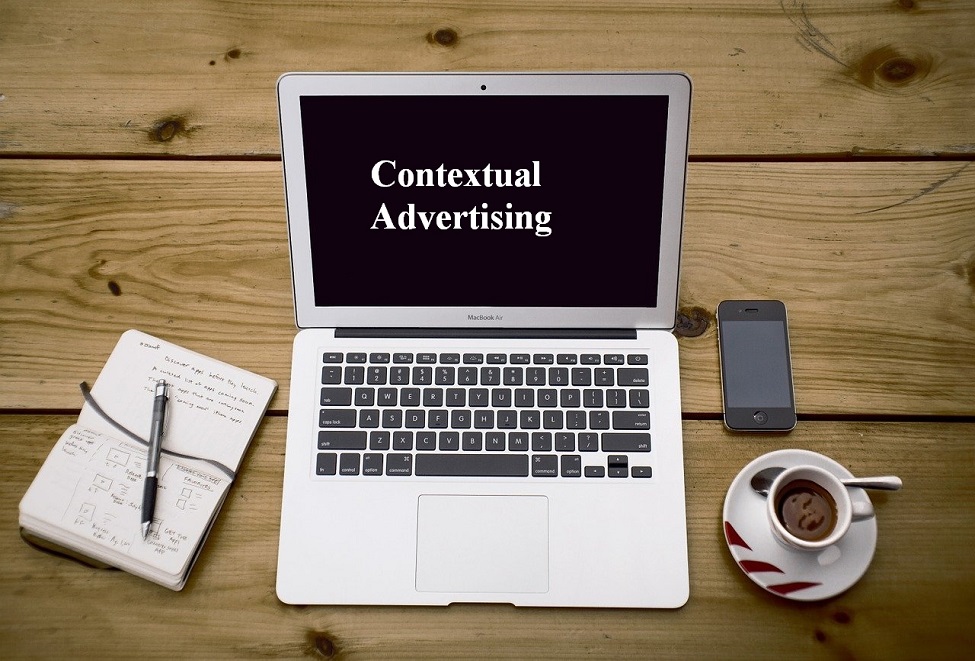
Almost a year after Google announced its plans to phase out third-party cookies in its Chrome browser, the search giant has recently announced it isn’t looking to build any alternatives to cookies that can track individual users browsing across the web – in any form.
Here is why this might be much better news for marketers than expected.
Why a Cookieless Digital World is Inevitable?
Cookies rely on immediate short-term performance, leveraging ever-decreasing pools of audiences. Google, the last major search browser to acknowledge this post Mozilla and Safari, has explicitly stated that any alternative tracking solutions will fall short on consumer expectations for privacy, and will most likely not stand up to rapidly evolving regulatory restrictions, and therefore aren’t sustainable.
How Marketers Benefit from Phasing Out of Third Party Cookies?
Lack of cookies doesn’t mean no targeting – marketers will now have to return to people-based marketing, recognizing their audience as people and not cookie pools. Marketers will be able to leverage quality, first-party data rather than paying for suspect third-party data of questionable origin and effectiveness. And context-based media buying will emerge to fill this gap, seeking out environments where the target audiences congregate.
Context Relevance will have a Much Bigger Share in the Pie
Contextual advertising allows advertisers to place ads based on-page contextual triggers, rather than affinities and past browsing behaviour – making it no longer necessary to track individual consumers across the web.
This method displays only those ads that are relevant to the content, and hence, increases engagement by capitalizing on the user’s current state of mind. For example, if a brand wants to sell its kitchen mixer, then it can place ads across articles that are explicitly talking about kitchen appliances, recipes, food items that involves use of mixers and more.
In the post-cookie world, contextual ad targeting will be the most viable advertising strategy. Not only does it significantly increase user engagement, but also bypasses use of personal data and user privacy breach.
AI and Computer Vision is Powering the Next Gen Contextual Targeting
Traditionally contextual advertising has been built around natural language processing (NLP), placing ads by identifying text-based contexts. However, emerging AI and computer vision now enable in-image and in-video contexts which adds multiple contextual layers that further support NLP based targeting with much more nuanced insight. For example, in a streaming video, the tech can recognize a scene (i.e., someone holding a pair of Nike shoes, or a brand logo) and a relevant ad can appear alongside it.

Contextual ad targeting completely transcends use of cookies and or any personal data and is future ready, even on platforms like Facebook and YouTube— as these platforms are most likely to move to privacy enabled advertising models in the future.
Top Digital Video Advertising Trends to Watch for in 2021
PUBLISH DATE: 25 January 2021
The year 2020 was an unusual year that turned both health and economy upside down. The pandemic has led more and more businesses, both small and big, to go online. This has resulted in an increase in the investment in digital marketing, including video advertising.
In 2020, 85% of businesses used video as a marketing tool and 83% of video marketers acknowledged that video helped them in generating leads. This article discusses top video marketing trends to watch for in 2021.
More and More Marketers will Move Away from Behavioral to Contextual Advertising
The rise in users’ awareness about their privacy on the internet and the coming into effect of data privacy regulations such as the General Data Protection Regulation (GDPR) and the California Consumer Privacy Act (CCPA) have made it difficult for marketers to track consumers through the use of third-party cookies. Some major web browsers such as Mozilla Firefox and Apple Safari have already dropped third-party cookies, and Google is on the path of phasing out these cookies from its Chrome browser by the year 2022.
Marketers have already started moving to contextual ad targeting that offers a cookie-less way of ad targeting, which is both effective and compliant with the data privacy laws. This trend will increase sharply in 2021 as more and more brands will adopt contextual advertising.
Connected TV Advertising will Grow at a Fast Rate
The pandemic has accelerated the connected TV viewership across the globe. According to eMarketer February 2020 prediction, there will be more than 208 million connected TV users in 2021 in the United States only, i.e., about 84% of digital video viewers.
According to the eMarketer forecast released in October 2020, connected TV ad spending will increase to $11.36 billion in 2021 against $8.11 billion in 2020, and it will reach $18.29 billion by 2024, i.e., double the amount spent on connected TV advertising in 2020.
For the US connected TV advertising, YouTube is currently the biggest source of supply. According to the eMarketer forecast, YouTube’s gross US CTV ad revenue will reach $4.30 billion in 2021, and by 2022, it will increase to $5.45 billion, accounting for 38.7% of total US CTV ad spending. In 2021, more and more brands and their partner YouTube marketing companies will run YouTube campaigns on connected TV.
Micro and Shoppable Videos will Rise
Video marketing experts predict that short-duration and shoppable videos will become more common in 2021. Micro-videos are short-length videos that deliver the brand’s message within five to six seconds. If long-duration videos like videos of events such as online workshop or questions and answers sessions are required, micro-videos can be utilized to promote these video events.
A shoppable video ad takes customers directly to the advertised product’s web page, and thus, facilitates buying. YouTube offers a direct response shoppable ad format that makes a video ad shoppable by adding browsable images of products below the ad. A viewer can directly reach the product page after clicking on the product image.
Use of 360-Degree Video Ads will Increase
360-degree videos are redefining the consumer viewing experience. Brands are expected to increase the use of these videos for advertising their products. These videos provide an immersive experience along with greater control over product view. Data shows that 360-degree videos have a greater video completion rate than regular videos.
Brand Suitability will Gain Momentum
A study published by GroupM in 2020, which involved a survey of about fourteen-thousand consumers in different countries, concluded that majority of consumers form a negative opinion of a brand when its ads appear next to inappropriate content. This and other similar studies make it highly important for marketers to make sure that their ads are not being placed against harmful or inappropriate content.
In 2021, marketers will increase their focus not only on brand safety but also on brand suitability. Marketers will not only put more efforts in ensuring that their ads are not placed against content that comes under generic unsafe categories, but also in making sure that an ad’s environment is suitable for that ad. A brand can determine the suitability of surrounding content for its ads by considering the nature of its business. For instance, it is suitable for an insurance brand to place its ads against a car accident news, but it is highly unsuitable and brand-damaging for a car manufacturer to do that.
Marketers should take into consideration the above-mentioned trends while creating their digital video advertising strategy for the year 2021. This will help them create highly successful video advertising campaigns and maximize return on investment.
Contextual Ad Targeting Allays Consumer Privacy Concerns
PUBLISH DATE: 02 March 2023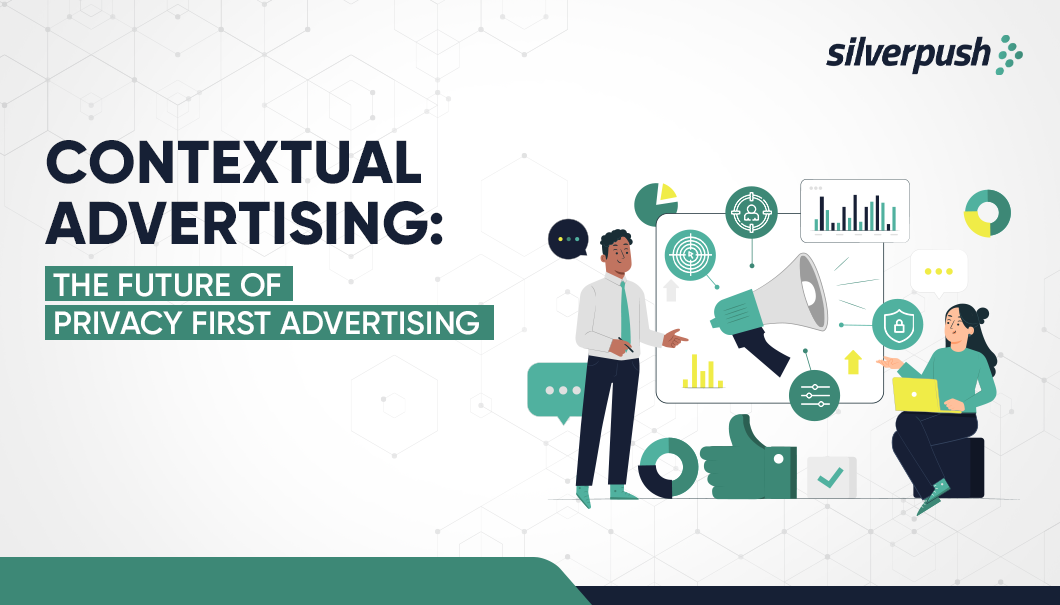
In recent years, advertisers have increasingly relied on third-party cookies to serve personalized ads that are relevant to consumers’ interests and behaviors.
However, with growing concerns about consumer privacy and data protection, particularly with the implementation of data privacy regulations like the General Data Protection Regulation (GDPR) and the California Consumer Privacy Act (CCPA), and Google’s decision to gradually phase out third-party cookies in its Chrome browser; marketers are now looking for safe and innovative ways to target consumers.
Contextual ad targeting has emerged as a solution that allays these concerns while still delivering relevant ads to consumers.
Read this informative blog to discover more about contextual ad targeting and its crucial role in addressing users’ privacy concerns.
Understanding Contextual Ad Targeting
Contextual ad targeting involves analyzing the content of the web page where the ad will be placed and delivering an ad, that is, relevant to that content.
For example, if the page is about travel; there is a high chance that ads for airlines, hotels, or travel agencies will be displayed. Contextual ad targeting doesn’t rely on tracking user behavior, making it a privacy-friendly alternative to other forms of advertising.
How Contextual Advertising Can Solve the Problem of Privacy?
One of the main reasons why advertisers should choose contextual advertising as their preferred targeting option is because it respects user privacy.
With this method, advertisers don’t have to collect and store personal data about users, which is, a concern for many people. By avoiding the use of cookies or other tracking technologies, consumers are able to browse the internet without feeling constantly observed by advertisers.
One more advantage of contextual ad targeting is that it provides consumers with a higher number of relevant ads. When ads are displayed based on the content of the page, they are more likely to be of interest to the user, increasing the likelihood of their engagement.
For example, if a user is reading an article about fitness, they are more likely to click on an ad for workout gear than for a new car.
Contextual ad targeting is also beneficial for advertisers. By displaying ads based on the content of the page, advertisers can be sure that their ads are shown to an audience, that is, interested in their products or services. This means higher chances of clicks and conversions, resulting in higher ROI on their ad spends.
What are the Different Online Privacy Regulations Advertisers Must Know?
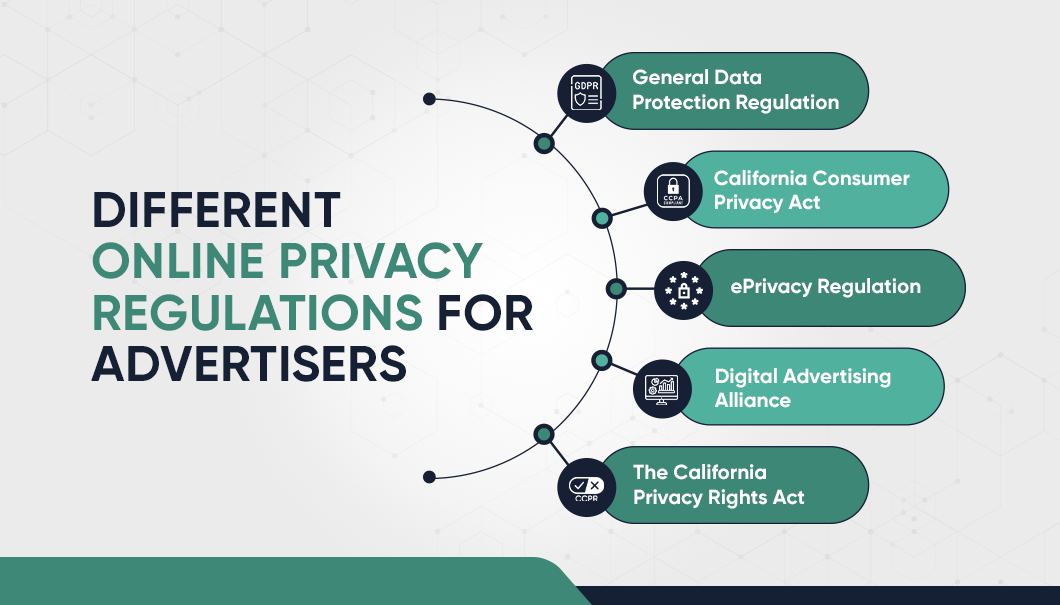
1. General Data Protection Regulation (GDPR): This regulation was implemented by the European Union in May 2018 and applies to all companies that process the personal data of EU citizens. It gives individuals more control over their personal data and requires companies to obtain explicit consent for data processing.
2. California Consumer Privacy Act (CCPA): This is a privacy law that was enacted in California in 2020. It gives California residents the right to know what personal information is being collected about them by businesses, and the right to request that their information be deleted.
3. ePrivacy Regulation: This regulation is currently being developed by the European Union to replace the ePrivacy Directive. It will regulate electronic communication services’ privacy, including the use of cookies and other tracking technologies.
4. Digital Advertising Alliance (DAA) Self-Regulatory Program: This program is a self-regulatory initiative for online behavioral advertising in the United States. It aims to provide consumers with transparency and control over their online data by offering an opt-out mechanism for personalized advertising.
5. The California Privacy Rights Act (CPRA) is a privacy regulation that builds upon the California Consumer Privacy Act (CCPA). It was passed in November 2020 and came into effect on January 1, 2023. The CPRA expands on the CCPA’s requirements and gives Californian consumers additional privacy rights, such as the right to correct inaccurate personal information, the right to limit the use of sensitive personal information, and the right to opt out of the sharing of their personal information.
These are just a few examples of online privacy regulations that exist around the world. It’s important for advertisers to stay up to date on these regulations and ensure that they are in compliance to protect the privacy of their users.
Are Targeted Ads an Invasion of Privacy?
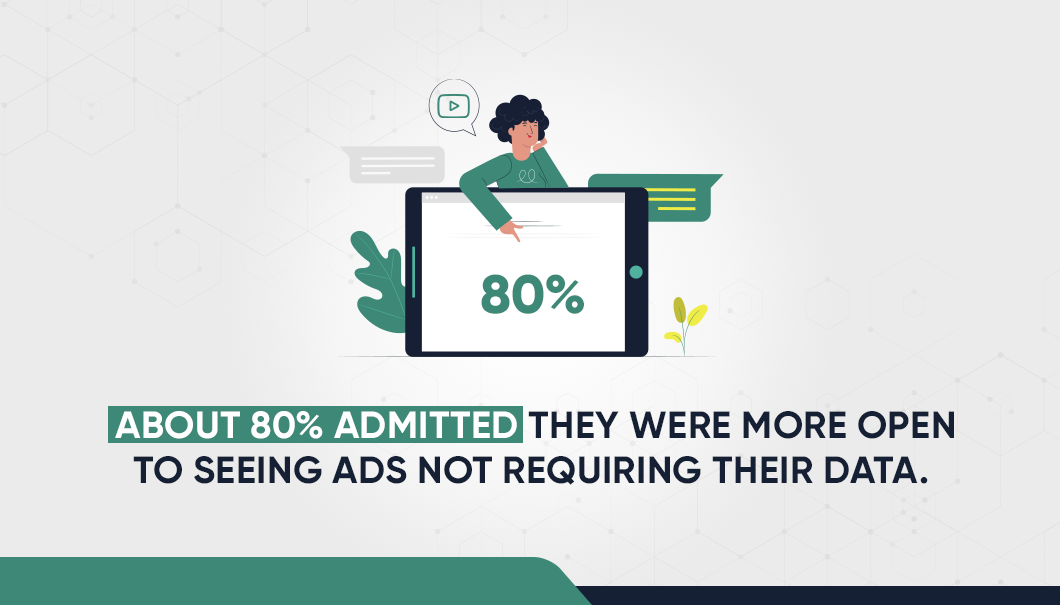
Targeted ads can be considered an invasion of privacy because they often rely on the collection and analysis of personal data in order to deliver personalized advertisements to individuals. This can include information such as browsing history, search queries, location data, and demographic information.
While targeted ads can be helpful in providing individuals with relevant information and offers, they can also be intrusive and make people feel uncomfortable or violated.
Here are some statistics that shed light on the privacy implications of targeted ads:
1. According to data, 66% of consumers said that they were uncomfortable with businesses and brands tracking their browsing history to show them personalized ads.
2. 86% of Americans feel that businesses and organizations collect more personal information than they actually require.
3. 81% of respondents feel they have little to no control over their personal data once it is shared with companies.
4. The survey also found 64% of consumers online have stopped doing business or engaging with an organization because they were asked to provide too much personal information.
5. Nearly two-thirds of Americans believe that the risks associated with their personal information are increasing faster than businesses and organizations can keep up with.
These statistics indicate that while targeted ads can be profitable for businesses, they are not necessarily popular with consumers. Many people are uncomfortable with the idea of their online behavior being tracked for advertising purposes, and some believe that targeted ads are unethical.
Conclusion
In conclusion, contextual ad targeting has emerged as a privacy-friendly solution to personalized advertising. By analyzing the content of the web page where the ad will be placed, advertisers can deliver relevant ads to users without relying on personal data or tracking technologies. This approach benefits both consumers and advertisers, as it respects privacy while still delivering effective advertising.
Why Demise of Third-Party Cookies Can Make Marketing Great Again?
PUBLISH DATE: 05 March 2020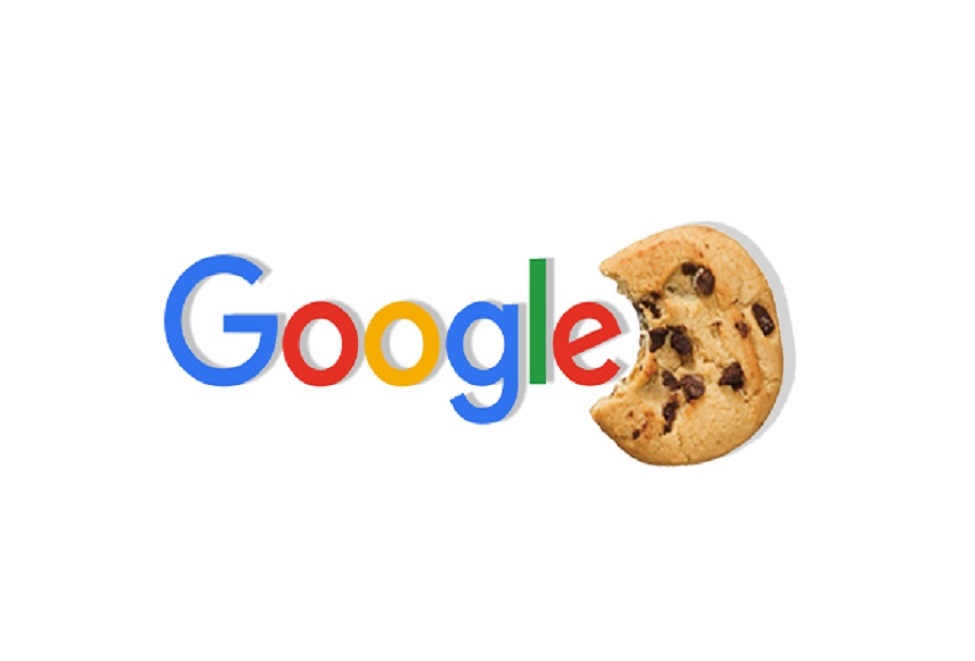
As privacy becomes a high priority for the world’s biggest advertising platforms, it’s time next-gen AI-powered contextual targeting solutions pave the way.
Google is finally blocking third-party cookies in its Chrome web browser by the end of 2024. Though this will be a gradual phase-out, the process has already begun — Google Chrome is to limit cross-site tracking by default starting February 2020, planned with the release of Chrome 80.
This move is not a complete surprise, given the privacy controls and the new anti-fingerprinting technology Google announced for Chrome in May 2019.
This also forms part of Chrome’s Privacy Sandbox initiative launched in August 2019 where it invited the industry to co-create new open web standards that advance privacy while continuing to support the free internet.
Some could call this a response to competitive pressure, or more importantly a step to meet user demand for higher privacy.
Others debate that this is a calculated move that gives Google a great privacy storyline, and at the same time further strengthens its hold in the digital ads industry with access to all first-party data.
Third-party advertisers will now need to get on Google’s ad network to receive the data that will help them target the right users.
But the fact remains that the demise of third-party cookies is now real with a defined timeline. And it’s not necessarily bad.
What Wasn’t Great About Third-Party Cookies, to Begin with?
1. Cookie matching, used for syncing cookies to identify a unique user, isn’t perfect. When a cookie from one site is not passed to an advertising platform (which happens in 40 to 60% of cases), a part of the puzzle to create an appropriate match is missed.
2. Cookies only enable limited ‘matching’ capabilities and don’t unify the massive amount of data that needs to be synced across the advertising ecosystem for earnest personalized experiences.
3. Cookies are limited for tracking consumer journeys across multiple devices and browsers, resulting in incomplete data. A 2018 study found that unique reach can be overestimated by up to 50% when relying solely on a cookie or device-based identifiers.
4. Due to a reduction in ad visibility, those who do see your ads are being exposed to a higher frequency of ads than intended. This means that your target audience is likely to receive approximately double the number of ads that were originally intended.
5. Also, a majority of tracking cookies are already rejected by browsers anyway. Over 66% of mobile devices don’t accept cookies leading to marketers already missing out on a critical audience segment, mobile users.
6. Moreover, cookies place over-reliance on the bottom funnel, with ad placements that cannot effectively convey the brand’s message in cluttered environments.
How Can Marketers Benefit from a Cookieless Digital World?
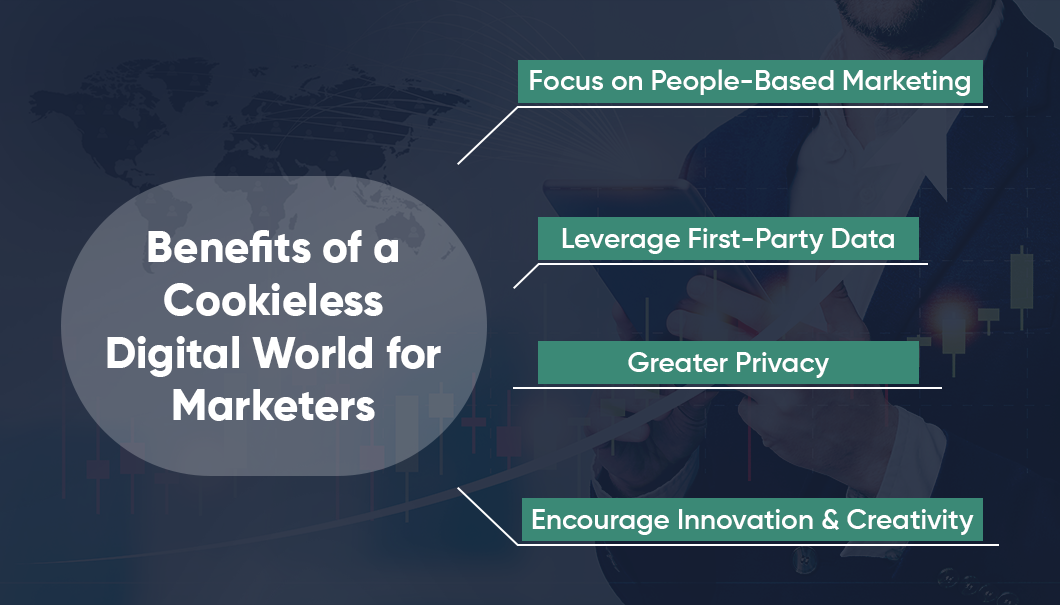
With the decline of cookie-based marketing, marketers must shift their focus back to people-based marketing and recognize their audience as individuals rather than cookie pools.
To fill the gap, context-based media buying will emerge as a strategy to locate environments where target audiences gather. This approach will allow marketers to leverage quality first-party data instead of unreliable third-party data.
Despite this shift, some marketers may still prioritize last-click performance and Google’s Privacy Sandbox offers hope for this segment by providing tracking models with greater privacy.
Furthermore, stakeholders in the advertising ecosystem are expected to collaborate to find alternative solutions for delivering targeted ads across websites in a cookie-less environment.
While targeting and attribution will remain possible, significant changes will be necessary to achieve this in the absence of cookies.
Alternative Targeting Options in a Cookieless World
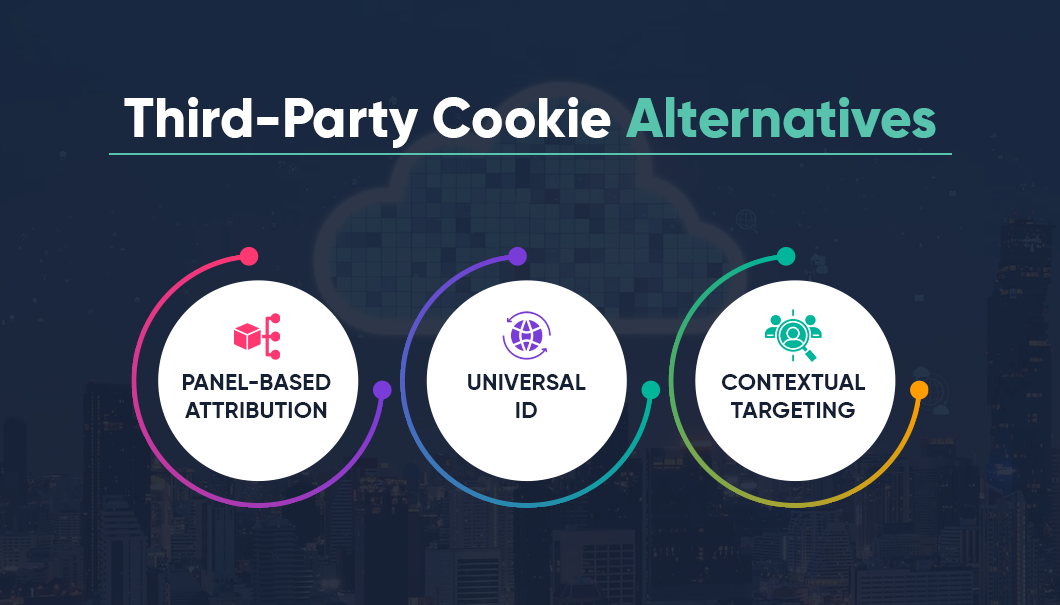
A cookie-less future is not as bleak as it sounds. Marketers already have options available, some of these are:
1. Panel-Based Attribution
It gives a picture of the online behavior of users over long periods. It allows advertisers to effectively map demographics and segments, understand user behavior and find users with similarities to customers. The panel-based attribution faces some fundamental challenges such as difficulty in working at a viable level, difficulty in extrapolating large and dispersed audiences, and problems with data efficacy.
2. Universal ID
This involves the identification of users based on deterministic matching. This is in contrast to the probabilistic matching approach used by cookies. But this will require collaboration between the vendors along with the development of standards.
3. Contextual Targeting
Contextual advertising allows advertisers to place ads based on-page contextual triggers, rather than affinities and past browsing behavior. This method displays only those ads that are relevant to the content, and hence, increases engagement by capitalizing on the user’s current state of mind.
For example, if a brand wants to sell its kitchen mixer, then it can have its ads placed on websites that have content about kitchen mixers, kitchen appliances, recipes, food items that involve the use of mixers, etc.
In the post-cookie world, contextual advertising will be the most viable advertising strategy. Not only does it significantly increase user engagement, but also bypasses the use of personal data and user privacy breaches.
AI and Computer Vision is Powering the Next Gen Contextual Targeting
Traditionally contextual advertising has been built around natural language processing (NLP), placing ads by detecting text-based contexts. This is how Google banner ads also work.
But NLP is not a perfect science, considering the complex nature of human language, where words can convey different meanings and intentions — difficult for a machine to understand.
Emerging AI and computer vision-powered tech now offer immense contextual possibilities, which are much more relevant. Contextual in-image and in-video advertising involve displaying ads for a page or video in-line with the content the user is actively engaging with.
For example, in a streaming video, the tech can recognize a scene (i.e. someone holding a pair of Nike shoes, or a brand) and a relevant ad can appear alongside it.
Computer vision-powered context detection completely transcends the use of cookies and or any personal data. Making contextual targeting future-ready, even on platforms like Facebook and YouTube— as these platforms come as much in the purview of data infringement as the third-party cookies today do. And will most likely move to privacy-enabled advertising models in the future.







